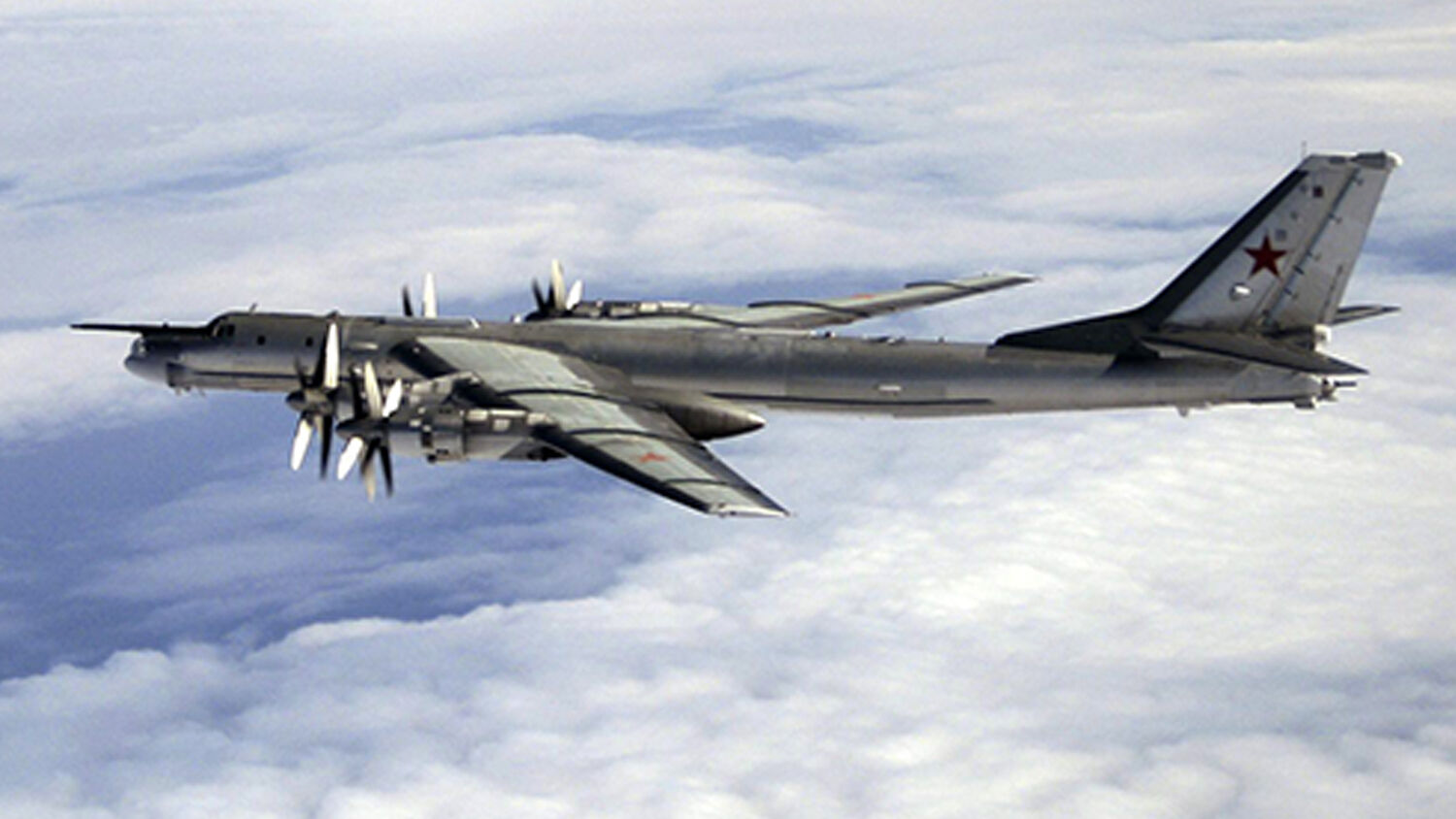
Russian Bombers Probe Alaska
For two consecutive nights last week, Russian nuclear-capable bombers probed the Alaskan coastline.
The incidents are just the latest in Russia’s ongoing efforts to project power in and around the Arctic Circle. The nuclear-capable Tu-95 bombers were the first Russian military aircraft to fly near the United States coastline since a pair of bombers flew past Alaska and California on July 4, 2015. Monday’s flight sent U.S. jets scrambling to intercept, but the Tuesday flyby only warranted an E-3 Sentry early warning aircraft. The bombers came within 36 miles of the U.S. coastline, just shy of U.S. territorial waters. cnn cited U.S. officials calling the interception “nothing out of the ordinary.”
It is “nothing out of the ordinary” because it fits into Russia’s ongoing efforts to dominate the Arctic Circle and test its periphery.
Just a day before the flights, Russia announced the completion of its new state-of-the-art five-story Arctic base. The base is located in Franz Josef Land, just north of the Barents Sea. It can house 150 personnel on 18-month tours. It is the second such air defense base to be constructed in the Putin era. While already boasting nuclear-ready Su-34 fighter jets, the base will soon be accompanied by another military airstrip.
According to the bbc, Russia is also building military bases at Rogachevo, Cape Schmidt, Wrangel and Sredniy.
More bases means more military movement. To cope, Russia has 40 icebreaker vessels with 11 more under construction. The U.S. has two, and one is broken. As Sen. Dan Sullivan (R-Alaska) told Foreign Policy, “The highways of the Arctic are icebreakers. Russia has superhighways, and we have dirt roads with potholes.”
The Foreign Policy report on Russia’s build-up included a map showing the vast rearmament of the Arctic Circle by Russia—with plenty of satellite, port and air defenses just a few hundred miles from the U.S. coastline.
In 2007, Russia planted its national flag on the seabed under the North Pole. It justified the action by arguing that the Lomonosov Ridge—part of Russia’s continental shelf—extended under the North Pole. It is now clear that the flag planting was more than symbolic. Russia was staking a claim and is now backing it up.
In total, Russia has 16 deepwater ports and 13 airfields in the Arctic Circle, some of which are bristling with S-400 long-range, surface-to-air missiles and Bastion supersonic antiship missiles.
Some in the West mock Russia’s Arctic incursion and joke that Russia utilizes reindeer at its Arctic bases. As insignificant as some think it is, Russia is expanding. America has just one base in the Arctic Circle—Thule Air Base. Claims of ownership to the Arctic’s potential $35 trillion worth of oil and gas reserves are still legally hazy, but if military might is any indication, the Arctic might already belong to Russia.
The Trumpet reported earlier this year on the Russian military build-up. Contributing editor Jeremiah Jacques wrote on why Russia is amassing its forces to the north:
Russia’s robust Arctic expansion has far-reaching implications, both geopolitically and financially. That is in large part because the Arctic is estimated to hold the equivalent of 412 billion barrels of natural gas and oil reserves, which amounts to 22 percent of estimated undiscovered total global hydrocarbon stocks.
Russia is going after the resource-rich Arctic. In doing so, its military will increasingly push at U.S. borders, both as a test of responsiveness and resolve.
America has permissively allowed Russian aircraft to buzz U.S. vessels in the Baltic, harass Japan, and poke at the American coastline. While there is now a tougher-talking U.S. administration on the scene, Russia has already made substantial militaristic gains in the Arctic through the Putin era. It isn’t going to back off now.
As Trumpet editor in chief Gerald Flurry wrote back in October 2008:
Russia’s attack on Georgia in August marks the beginning of a dangerous new era in history. This was the first military strike of a rising Asian superpower—and there will be more! … Russia is determined to be an energy superpower in an age when the whole modern world is hungry for energy. If Russia sees its primary source of oil being threatened, it is going to fight! … We have witnessed the beginning of a new era! We saw an extraordinary military strike by one of the kings of the east! And don’t forget China, another of those “kings.” It is making inroads all over the world. What power those kings of the east are amassing—and so quickly! Europe can see it! And it is formulating a counterstrategy. The whole world should see this developing and realize: This will inevitably end in nuclear war!
To understand more about this sobering trend and to know where it is leading, read Mr. Flurry’s article “Russia’s Attack Signals Dangerous New Era.”
